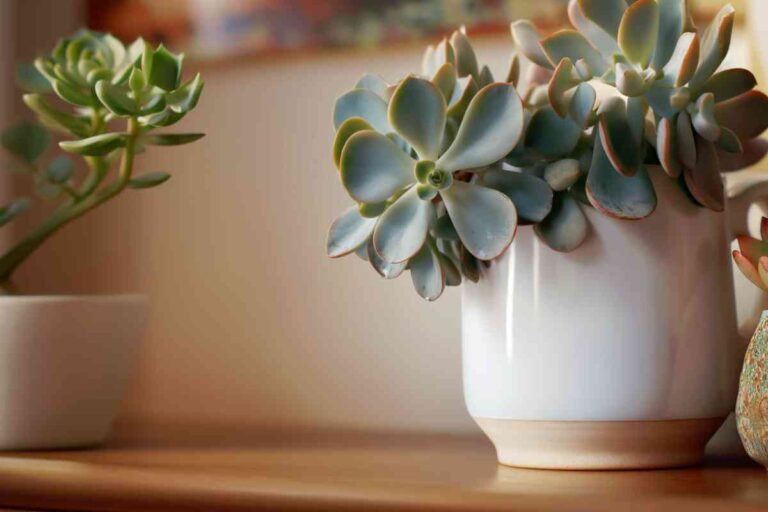Basella Alba Rubra: Benefits and Uses
Basella Alba Rubra Overview
If you are looking for a unique and versatile plant to grow in your garden, Basella Alba Rubra might be worth considering. Also known as Red Vine Spinach, Ceylon Spinach, and Indian Spinach, Basella Alba Rubra belongs to the Basellaceae family and is an annual climbing vine that can add a pop of color and texture to your garden.
Basella Alba Rubra is native to tropical Asia and Africa, and it is commonly grown as an ornamental plant due to its succulent, red-stemmed, and ornamental foliage. However, it is also an edible plant that is widely used in Asian and African cuisines as a leaf vegetable.
The plant has heart-shaped leaves that are entirely edible and mucilaginous, which means they release a sticky substance when cooked. The leaves have a mild flavor that is similar to spinach, making them a popular ingredient in soups, stews, and salads.
The red dye in the plant is also used in traditional medicine and cosmetics. Basella Alba Rubra is also known as Malabar Nightshade and is sometimes confused with other ornamental foliage vines due to its red stems and climbing vine feature.
Overall, Basella Alba Rubra is a fascinating plant that can add both ornamental and culinary value to your garden. Whether you are looking for an attractive climbing vine or a tasty leafy green, Basella Alba Rubra is definitely worth considering.
Cultivation and Care
If you want to grow Basella Alba Rubra, you need to know that it is a tropical plant that requires warm temperatures and moist soil. It is a popular vegetable in Asian cuisine, often used as a spinach substitute. Here are some tips on how to cultivate and care for Basella Alba Rubra.
Planting
Basella Alba Rubra is usually grown from seed, which can be sown directly in rows or started indoors and transplanted later. The seeds should be planted in full sun, in rows with support from a trellis or other structure. The soil should be well-drained and have a pH between 6.0 and 7.5.
Water and Soil
The plant requires adequate moisture to grow and thrive. It is important to keep the soil consistently moist, but not waterlogged. Basella Alba Rubra prefers a soil that is rich in organic matter and high in calcium and iron. Fertilize the plant with a balanced fertilizer every two weeks.
Care
Basella Alba Rubra is a perennial plant that can be grown as an annual in cooler climates. It is sensitive to frost and requires warm temperatures to grow. The plant needs support as it grows, and it should be trained to climb the trellis or other structure.
Harvesting
Basella Alba Rubra matures in 60-70 days after planting. The leaves can be harvested when they are small and tender, and the plant will continue to produce new growth throughout the summer. It is important to harvest the leaves regularly to encourage new growth.
Common Names
Basella Alba Rubra is also known as Malabar Spinach, Ceylon Spinach, Indian Spinach, Vine Spinach, Red Vine Spinach, and Creeping Spinach.
In summary, to cultivate and care for Basella Alba Rubra, you need to plant it in full sun, provide adequate moisture, and ensure the soil is rich in organic matter and high in calcium and iron. The plant requires support as it grows, and it should be harvested regularly to encourage new growth. With proper care, you can enjoy a bountiful harvest of this tasty and nutritious vegetable.
Physical Characteristics
Basella alba rubra, also known as Malabar Spinach, is a climbing vine that is widely cultivated in tropical regions for its edible leaves. The plant has two varieties, one with green leaves and the other with dark green, glossy, and heart-shaped leaves. The leaves of both varieties are edible and can be used as a substitute for spinach or chard.
The leaves of Basella alba rubra are oval in shape and can grow up to 10 cm in length. The plant can reach a height of up to 10 meters and has a thick stem that can support its weight. The leaves are dark green in color and have a slightly crunchy texture when cooked. The plant produces small, white, and fragrant flowers that are followed by small, black, and round fruits.
The physical characteristics of Basella alba rubra make it a popular vegetable in many parts of the world. The plant is easy to grow and can be harvested throughout the year. The edible leaves are rich in vitamins and minerals, including vitamin C, iron, and calcium. The leaves are also low in calories and can be used in a variety of dishes, such as soups, stews, and salads.
In summary, Basella alba rubra is a climbing vine with oval, dark green, and glossy leaves that are edible and can be used as a substitute for spinach or chard. The plant is easy to grow and produces fragrant flowers and small, black fruits. The leaves are rich in vitamins and minerals and can be used in a variety of dishes.
Culinary Uses
Basella alba and Basella rubra are both used extensively in cooking, especially in Southeast Asia and India. The leaves, stems, and shoots of the plants are all edible and have a mild, slightly sweet flavor. They are also known for their mucilaginous texture, which makes them a popular ingredient in soups, stews, and salads.
In many countries, Basella is commonly used in soups and stews. The leaves and stems are added to the broth to give it a slightly sweet and sour taste. The mucilaginous texture of the leaves and stems also helps to thicken the soup or stew. In some countries, Basella is also used as a vegetable in its own right, steamed and served with rice.
In addition to soups and stews, Basella is also used in salads. The leaves and stems are chopped finely and mixed with other vegetables to create a refreshing and healthy salad. The slightly sweet flavor of the leaves and stems pairs well with acidic dressings, such as lemon or lime juice.
Another popular way to cook Basella is to stir-fry it with other vegetables and meats. The leaves and stems cook quickly and retain their bright green color, making them a great addition to any stir-fry. The mucilaginous texture of the leaves and stems also helps to thicken the sauce, giving the dish a slightly thicker consistency.
Overall, Basella alba and Basella rubra are versatile ingredients that can be used in a variety of dishes. Their mild flavor and mucilaginous texture make them a unique addition to soups, stews, salads, and stir-fries. If you haven’t tried Basella before, consider adding it to your next recipe for a new and exciting flavor and texture.
Nutritional Value
Basella alba and Basella rubra are known for their high nutritional value. They are a rich source of vitamins A and C, which are important for maintaining healthy vision, skin, and immune system. One cup of cooked Basella leaves contains about 290% of the daily recommended intake of vitamin A and 70% of the daily recommended intake of vitamin C.
In addition to vitamins, Basella leaves are also a good source of protein, which is essential for muscle growth and repair. One cup of cooked Basella leaves contains about 4 grams of protein.
Basella leaves are also rich in minerals such as magnesium, phosphorus, and potassium. Magnesium is important for maintaining healthy bones and muscles, while phosphorus is essential for proper kidney function. Potassium is important for maintaining healthy blood pressure.
Basella leaves also contain antioxidants, which help to protect the body against damage from harmful molecules called free radicals. Antioxidants are important for maintaining healthy cells and reducing the risk of chronic diseases such as cancer and heart disease.
Overall, Basella alba and Basella rubra are a nutritious addition to any diet. They are low in calories and high in vitamins, minerals, and antioxidants, making them a great choice for maintaining overall health and wellness.
Geographical Distribution
Basella alba and Basella rubra are tropical perennial vines that are widely distributed in Southeast Asia, India, and Africa. They are commonly known as Malabar spinach, Ceylon spinach, or Indian spinach. These plants are grown for their edible leaves, which are used in various dishes and salads.
In India, Basella alba and Basella rubra are widely cultivated and consumed. These plants are native to India and are found in different parts of the country, including Maharashtra, Tamil Nadu, Andhra Pradesh, and Kerala. In Maharashtra, these plants are commonly known as Mayalu and are used in various Maharashtrian dishes, such as Mayalu bhaji and Mayalu vadi.
In Indonesia, Basella alba and Basella rubra are also widely cultivated and consumed. These plants are commonly known as Bayam and are used in various Indonesian dishes, such as Gado-gado and Sayur Bayam.
In Vietnam, Basella alba and Basella rubra are also grown and consumed. These plants are commonly known as Rau Mồng Tơi and are used in various Vietnamese dishes, such as Canh Chua and Gỏi Cuốn.
Overall, Basella alba and Basella rubra are widely distributed in Southeast Asia, India, and Africa and are an important source of nutrition for many people in these regions.
Frequently Asked Questions
What is the scientific name for Malabar spinach?
The scientific name for Malabar spinach is Basella alba or Basella rubra. Basella lucida is also a synonym for Basella alba.
What is the difference between Basella alba and Basella rubra?
Basella alba has green stems and leaves, while Basella rubra has purplish stems and leaves. Basella rubra is also known as Red Malabar spinach.
What are the benefits of consuming Basella alba?
Basella alba is a good source of vitamins A and C, iron, and calcium. It is also rich in antioxidants and has anti-inflammatory properties. Consuming Basella alba may help improve digestion, boost immunity, and promote healthy skin and hair.
What is the use of Basella rubra?
Basella rubra is used in traditional medicine to treat various ailments such as fever, constipation, and skin diseases. It is also used as a natural food coloring agent and as a vegetable in many cuisines.
What is the family name of Malabar spinach?
The family name of Malabar spinach is Basellaceae.
What are the characteristics of Basella alba fruit?
Basella alba fruit is a small, round berry that is usually red or black in color. The fruit contains small, black seeds and has a slightly sweet flavor. It is used in some traditional medicines to treat diarrhea and dysentery.
The scientific name for Malabar spinach is Basella alba or Basella rubra. Basella lucida is also a synonym for Basella alba.
“}},{“@type”:”Question”,”name”:”What is the difference between Basella alba and Basella rubra?”,”acceptedAnswer”:{“@type”:”Answer”,”text”:”
Basella alba has green stems and leaves, while Basella rubra has purplish stems and leaves. Basella rubra is also known as Red Malabar spinach.
“}},{“@type”:”Question”,”name”:”What are the benefits of consuming Basella alba?”,”acceptedAnswer”:{“@type”:”Answer”,”text”:”
Basella alba is a good source of vitamins A and C, iron, and calcium. It is also rich in antioxidants and has anti-inflammatory properties. Consuming Basella alba may help improve digestion, boost immunity, and promote healthy skin and hair.
“}},{“@type”:”Question”,”name”:”What is the use of Basella rubra?”,”acceptedAnswer”:{“@type”:”Answer”,”text”:”
Basella rubra is used in traditional medicine to treat various ailments such as fever, constipation, and skin diseases. It is also used as a natural food coloring agent and as a vegetable in many cuisines.
“}},{“@type”:”Question”,”name”:”What is the family name of Malabar spinach?”,”acceptedAnswer”:{“@type”:”Answer”,”text”:”
The family name of Malabar spinach is Basellaceae.
“}},{“@type”:”Question”,”name”:”What are the characteristics of Basella alba fruit?”,”acceptedAnswer”:{“@type”:”Answer”,”text”:”
Basella alba fruit is a small, round berry that is usually red or black in color. The fruit contains small, black seeds and has a slightly sweet flavor. It is used in some traditional medicines to treat diarrhea and dysentery.
“}}]}


